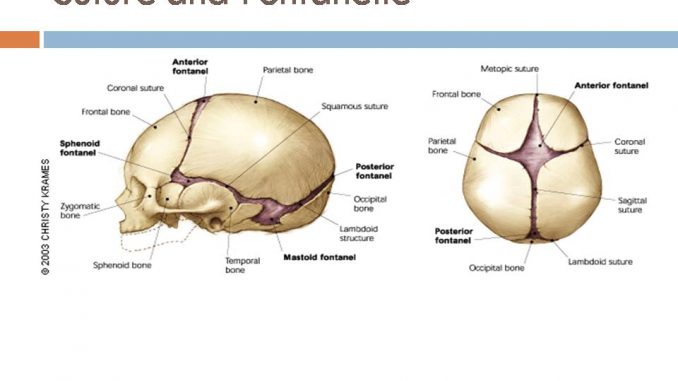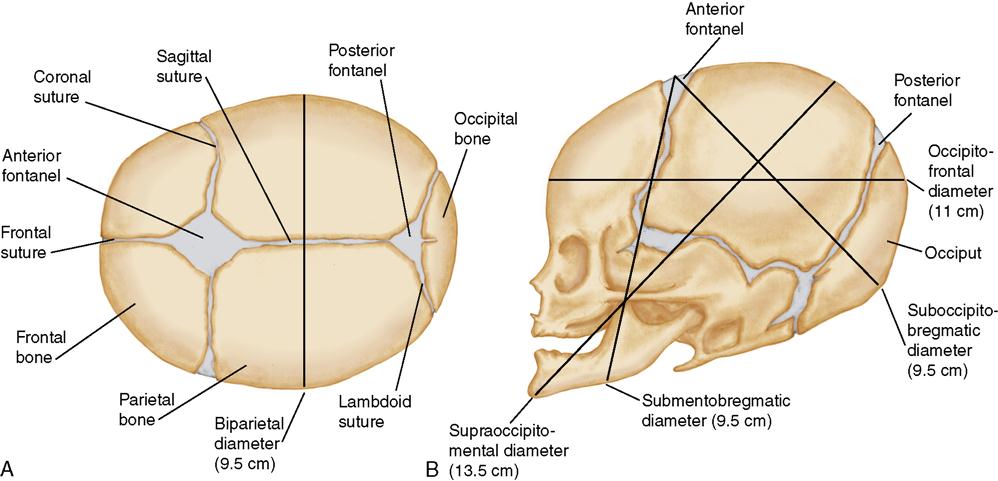
Suture and Fontanelle
- Skull contains 29 bones, except for mandible, ear ossicles and hyoid bone, all other skull bones are joined by suture.
- Suture is an immobile joint between bones of skull.
- During fetal life and early childhood, the skull bones are joined by palpable membrane rather than tight fitting suture because it is relatively easy for skull bone to move and overlaps during birth through narrow birth canal.
- Some of the larger membranous areas between such incompletely ossified skull bones are called Fontanelle.
- The Fontanelle allows the skull to expand as child brain grown and develops few year after postnatal life.
Types of sutures:
- Coronal suture: it lies between Frontal and Parietal bone
- Lambdoidal suture: It lies between Occipital and parietal bone
- Sagital suture: It lies between left and right parietal bone
- Squamousal suture: It lies between Temporal and parietal bone
Types of Fontanelles:
1. Frontal or anterior fontanelle:
- It is located between angles of two Parietal bone and two sections of frontal bones.
- It is diamond shaped.
- It closes about 12-18 month after birth.
2. Occipital fontanelle:
- It is located between occipital bone and two parietal bones.
- It closes about 2 month after birth.
3. Sphenoid fontanelle:
- It is located at junction of frontal, parietal, temporal and sphenoid bones.
- It closes about 3 month after birth,
4. Mastoid fontanelle:
- It is located at the junction of occipital, parietal and temporal bones.
- It begins to close after 2 month after birth but does not completely close up to 12 months.

